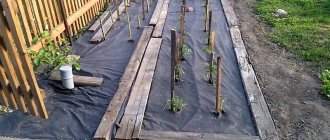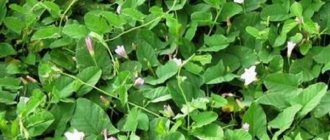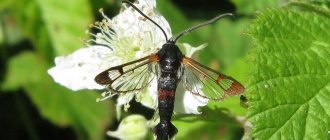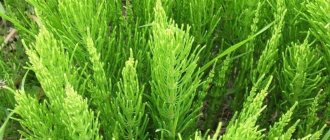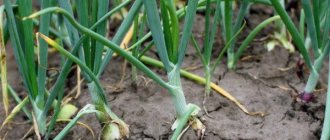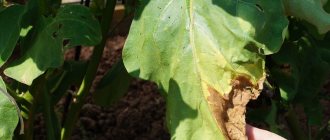Sow thistle is a common weed plant in the European part of Russia. There are several varieties of it, each of which has its own characteristics. Like all representatives of fauna, grass has its pros and cons. However, the appearance of weeds in the garden is always a serious problem. It’s worth finding out how to permanently get rid of thistle on your property.
The benefits and harms of garden sow thistle
If we analyze the positive and negative consequences of the appearance of this plant on the site, then, of course, the latter will be much more serious. All types of thistle are perfectly adapted to temperate climates and have exceptional survival and fertility.
Sow thistle is an annual crop from the Asteraceae family. It has several names: milkman, bunny, bunny salad. Sow thistle is a weed that is quite difficult to remove. The plant has a powerful and extensive root system with thickened rhizomes and long shoots. The speed of root growth is very high.
Thistle has the ability to literally deplete the soil, taking all the nutrients for itself. No other plant is able to compete with it - sow thistle displaces any crop from the site. Plants that are neighbors of the milkman are literally withering away before our eyes.
After the death of the weed, the rhizomes remain in the ground for the next season, and although they do not pose a threat to the plants, digging up or loosening the area with them is very difficult. Therefore, when any type of sow thistle appears in the garden, it is necessary to quickly get rid of it.
But, despite such manifestations, this plant can also perform useful functions. First of all, this is its nutritional value. The plant is very loved by domestic animals - cows, goats, sheep. The latter prefer sow thistle to many wild and domesticated crops.
The use of this plant for human nutrition is also common: its leaves are used as a filler in soups, stews and salads. The roots of the plant can be consumed like any other root vegetables, since they resemble Jerusalem artichoke in taste and vitamin composition.
Important! Sometimes thistle leaves can taste bitter. To remove the taste, you need to keep them in a 0.3% saline solution for half an hour before cooking.
The milk jug is also used in agricultural activities. In particular, this plant is used as a distraction to combat aphids. The milky juice of thistle contains not only latex (like, for example, dandelions) but also emulsifiers that have a sweetish taste. Its composition is very attractive to aphids, so gardeners often plant the crop around the perimeter of the site.
Important! When using milkweed as a distraction plant, you must carefully monitor its range and prevent it from expanding. Any newly formed sow thistle shoots in the garden must be destroyed immediately!
Another use of the plant in agricultural technology is the use of its stems and leaves as mulching material. The content of useful minerals in thistle is high, so the mulch from it will not only perform the function of retaining moisture, but also act as a top dressing.
It must be remembered that it is unacceptable to use already faded buds as mulch, since they may contain formed seeds. Once in favorable conditions, they will germinate very quickly; you will have to completely remove the mulch layer in order to defeat the new generation of weeds.
The next important property of thistle is its honey-bearing role. Like all asteraceae, its numerous flowers have a pleasant scent that attracts honey bees. All types of sow thistle provide honey-collecting insects with a lot of nectar and pollen.
In addition, thistle has medicinal properties. The main purpose is the treatment of colds. In addition, decoctions from the leaves of the plant are used for the following conditions:
- liver diseases (jaundice);
- kidney diseases (urolithiasis, inflammation);
- headaches;
- neuroses;
- metabolic disorders.
Externally, decoctions are used as lotions to treat wounds and bruises.
Folk remedies made from milkweed have no contraindications (except for individual intolerance).
Important! There is also thistle, an even more unwelcome guest on any site. Unlike the garden plant, it is a perennial, livestock does not eat it, and it is not applicable for practically any of the listed tasks. Removing field sow thistle from the garden is even more difficult than its “domesticated” relative.
Description of thistle
Sow thistle weed
The genus Sónchus or sow thistle belongs to the Asteraceae family, it is quite numerous - about 130 species. But in the beds you can most often find field thistle, which grows almost as tall as a person, rough thistle - both of them are herbaceous perennials, and garden thistle. This species is somewhat lower - its maximum height is about a meter, and besides, it is an annual.
All these plants are unpretentious and surprisingly tenacious. On what soil does thistle grow? Any, even one poor in nutrients and moisture. But in rich beds it feels much better and can reach its maximum size. How to distinguish thistle from other plants?
Field sow thistle
Field sow thistle
happily settles in the beds. This is a perennial plant with a bare stem up to 2 m high and a taproot capable of going 4 m deep into the ground. There are leaves only in the lower part, they are jagged, small spines are soft. All parts of the plant secrete a milky sap containing rubber.
Sow thistle rough (rough)
Rough sow thistle
Lives in the garden bed for 2 years. Its not too tall stem, which secretes a milky sap, has darker pubescence, which contrasts with the green or bluish-blue leaves. Their shape can vary from highly dissected to smooth. At the base of each leaf there are processes called ears. Flowers are collected in a shield.
Sow thistle
Sow thistle
The height of the plant depends on the fertility of the soil, sometimes it is only 25 cm. The stem, bearing alternate jagged leaves of a greenish-gray color, can branch.
The most common species have much in common in their method of reproduction:
- yellow baskets formed by medium-sized reed flowers, they look like dandelions;
- flowering throughout the second half of summer;
- small elongated seeds easily come off the basket when ripe and are carried far by the wind, thanks to the fluffy tuft that works like a parachute; there can be up to 6.5 thousand of them on one plant;
- long horizontal fragile creeping roots and a central taproot.
It is this structure of the root system, coupled with easy seed propagation, that makes the weed so widespread and tenacious. Regular weeding will not help here. Fragile roots cannot be completely pulled out of the ground - they break easily. Each piece of root larger than 3 cm is capable of growing again. The number of plants only multiplies due to illiterate weeding. Seeds germinate immediately as soon as they fall into the soil. Even once at depth, they can wait in the wings for up to 20 years. How to deal with thistle in the garden?
How to deal with thistle in the garden
The milkweed reproduces both by seeds and by vegetative means (and this despite being an annual). That is why the fight against it is so difficult and time-consuming; many gardeners sincerely want to get rid of thistle on their site once and for all.
The high vitality of milkweed is due to its excellent regeneration properties - even from a small fragment of a rhizome or a simple branch of a root a full-fledged plant can grow. Therefore, the main thing in the fight against the spread of this crop will be measures aimed at weakening its root system.
If we consider methods of combating thistle, we can distinguish three main groups:
- use of chemicals;
- use of folk remedies;
- mechanical measures.
Important! The main thing in this fight is consistency. Any events held must be regular. The recommended time for repeating procedures is 5-7 days.
These methods are discussed in detail below.
How to remove sow thistle from the garden forever using chemical means
Perhaps this is the simplest and most effective way to kill weeds. Chemical control of thistle is carried out using a variety of herbicides. The following remedies have proven to be most effective:
- Chistopol;
- Lontrel;
- Anti-weed;
- Task;
- and etc.
Their use must be carried out in full accordance with the instructions, as well as with the use of skin and respiratory protection.
The disadvantage of the chemical method of combating milkweed is obvious - herbicides poison the top layer of soil, therefore, at least during the year of treatment, it is impossible to plant any crops in the place where the weed grew.
Attention! It is recommended to poison sow thistle in the garden at once in all areas where it is located, so as not to stretch out the procedure for “adding” chemicals to the area for several months, or even years.
How to remove thistle from the garden using folk remedies
Almost all folk remedies for sow thistle in the garden have a “spot” effect, that is, they are aimed at the individual destruction of individual plant specimens. This seems labor-intensive, but if you consider the fairly large size of the thistle bush, it does not pose a serious problem.
Traditional methods of destruction:
- Use of kerosene. Using a spray bottle, you need to spray the leaves, stems and flowers of the milkweed with kerosene. After such treatment, the plant will dry out and die. It is advisable not to allow kerosene to come into contact with other crops or soil.
- Using ammonia. One 100 ml bottle (you can use not only ammonia from a pharmacy, but also regular ammonia from a hardware store) is diluted in 2 liters of water. The resulting composition is sprayed onto the soil where thistle grows.
- Cutting stems.
This is done regularly, with the cut following the ground level. It is necessary to treat all young growth that appears. Regular stem formation weakens the plant and it eventually dies. When new stems stop appearing, you should remove the rhizomes from the soil and carefully dig up the entire area. Important! The method is especially effective when the weed is flowering. If in the period up to this point it is necessary to remove 5-6 stems from the rhizome, then when flowers appear, cutting the stem once is sufficient.
- Cutting inflorescences. Regular removal of flowering parts and buds from the very moment of their appearance significantly depletes the plant and leads to its death. And although this method is less effective than cutting the stem, it is also often used to solve two problems at once: to collect material for preparing a decoction and to destroy the weed.
- Application of mulching. Unlike those previously discussed, the method operates over an area, and not pointwise. This simple procedure is effective against all types of weed. But, since it is very tenacious, you should use not quite ordinary mulch. It should be as dense and hard as possible, but at the same time have all the necessary properties of this agricultural shelter. The ideal option for combating thistle would be small sawdust or eggshells.
- Use of green manure. Also a mass impact method. Some cereals have even greater rates of growth and development of the root system than sow thistles. They are the ones recommended to use to combat it. These include:
- alfalfa;
- linen;
- legumes;
- nettle
Agrotechnical measures in the fight against sow thistle in the garden
Agrotechnical control methods are essentially mechanical. They are quite simple, but at the same time labor-intensive. On the other hand, their negative impact is significantly lower not only than the use of herbicides to destroy thistle, but also some traditional methods.
Methods:
- Digging the soil. This is the most effective control method, since it is it that allows you to destroy the root system of the plant. It is advisable to use a pitchfork, because this does not destroy the root system of the plant; it can be removed entirely, without leaving the slightest part capable of vegetative propagation in the ground.
- In small areas, you need to regularly weed the soil using a regular hoe. In some ways this is reminiscent of folk methods for cutting stems, but carried out en masse.
- Mulching using continuous artificial materials, for example, agrofibre or polyethylene film.
Attention! All of the listed control measures are also effective against thistle and thistle. But you need to know that in this perennial the tuberous thickenings of the root system are located much deeper than in milkweed (up to 30 cm), which may require additional processing next year.
Prevention
In order not to have any problems with removing thistle from your garden, it is better to take care of prevention. Its essence boils down to the fact that the site must be dug up regularly. If the weed in the garden grows quickly, then digging up the area should be done not only in the fall, but also in the spring. This way, it will be possible to remove the remaining roots from the soil and prevent the development of new plants.
Regular weeding is also important. But a positive effect can only be achieved if they are carried out systematically.
It will also be useful to learn about how to combat wheatgrass in the garden, and what means are the best and most effective.
If you notice that weeds have begun to sprout on the site, then you need to immediately start weeding. This will prevent the culture from growing throughout the entire area.
Features of the fight against sow thistle on potatoes
Potatoes are one of the main root crops grown in summer cottages, so combating sow thistle in potato crops will be an urgent task. You can get rid of thistle on potatoes using the methods listed earlier, but with some features characteristic of processing potato beds.
Mechanically, this can be done through intensive work with the soil: weeding and hilling. Actually, potato agricultural technology itself consists of repeated tillage of the soil, which will be the most effective remedy against sow thistle. We can say that if potato farming practices are followed, it will be guaranteed to be free from this weed.
Chemical methods can also be used to control weeds. The principle is the same as when processing conventional areas filled with it. In this case, some rules must be followed in potato beds:
- Plant potato tubers at a sufficient depth.
- Before processing, be sure to loosen the soil and moisten it a little.
- After treatment with herbicides, do not irrigate under any circumstances, so that the water does not contribute to the penetration of chemicals into the tubers.
Important! It is best to carry out chemical treatment of sow thistle on potatoes in dry weather, when no rain is guaranteed for 3-5 days.
What harm does
The weed sow thistle poses a threat to berries, fruits and vegetables that grow nearby.
The harm caused is as follows:
- creating factors for the spread of fungal diseases of plant crops and attracting insect pests;
- difficulty cultivating soil;
- slowing down the growth and development of plantings by creating artificial shade and absorbing natural sunlight.
An important feature of thistle is that the root system of the weed grows into the soil to a depth of six meters and sucks out all the valuable minerals and vitamins. As a result, the soil becomes depleted, which adversely affects the quality of the future harvest.
Thistle multiplies rapidly - and this is its danger.
Each plant is capable of producing about six and a half thousand seeds. In the wind, these seeds quickly spread between plantings.
See also
Description and characteristics of the tomato variety Amber bunch f1Read
Advice from experienced gardeners
Most of the advice from experienced gardeners comes down to one thought: you can fight thistle effectively, but this process is long and a much more acceptable option would be to prevent its appearance on the site.
Prevention of the appearance of weeds mainly includes agrotechnical methods, since it is impossible to prevent the appearance of the plant by any other means: all existing methods of control are extremely aggressive in nature, and it is quite problematic to base prevention on them.
You can apply dark plastic film at the end of the season (just before the start of winter). It is necessary to cover the maximum possible area of the site. It is pressed to the ground along the perimeter with some heavy objects - bricks or reinforcement bars. The rotting of the soil that begins in the spring will destroy the root system of the young sow thistle.
Another recommendation is to destroy any plant waste that remains after digging up the sow thistle root system using a fork. They must be collected from the entire site and burned.
Tillage associated with the destruction of thistle is best carried out in the spring as early as possible - thanks to this, it is possible to prevent the formation of a powerful root system of the plant, its growth will be significantly slowed down.
Sow thistle - what kind of plant
Thistle is a tenacious plant. It belongs to the Astrov family. There are several types in nature:
- garden;
- field;
- pink (rough).
All species except thistle are perennials. They have a powerful root system. The tap root, the central root, can go deep to a distance of up to one and a half meters in one summer. In plants that have overwintered more than one winter, the roots can reach four meters. It is clear that such plants are not afraid of drought and frost.
In addition, the weed has well-developed lateral roots, located close to the surface of the earth and occupying a large area.
Each lateral root has a bud capable of producing a viable shoot. If you do not get rid of the weed in a timely manner, after a short period of time a whole plantation will appear. Look at the photo to see what a clearing overgrown with pink thistle looks like.
Thistle flowers, depending on the species, are yellow or pink. The inflorescence is a basket. All plants have spiny, triangle-shaped leaves and spiky stems. They are hollow inside. A white liquid appears on the cut of the stem or leaves. This is milky juice.
The weed blooms for a long time, almost all summer and until mid-autumn. Within a month, brown or dark yellow seeds with a fluffy tuft are formed in place of the buds. They are carried by the wind to a great distance from the mother bush. The method of propagation of the harmful weed is seed or vegetative.
Attention! If even one flowering plant is not picked from the plot, the summer resident will provide himself with work for a long time.
Traditional methods of getting rid of weeds
Traditional methods are more gentle. Spraying thistle with kerosene is very effective
By acting carefully, you can quickly get rid of thistle without harming other plants
You can plant “Jolly Fellows” flowers around the perimeter of the garden bed, next to which thistle does not grow.
The use of green manure (lupine, alfalfa, nettle, rye, peas, etc.) is effective. After these plants germinate, you need to cover them with cardboard or newspapers and leave them to grow until spring. Not a single weed can survive in such conditions, and rotted grass will enrich the soil.
This method can also be used without sowing green manure. In a neglected area that is overgrown with weeds, you need to trample down tall plants, trying to press them as close to the ground as possible, then cover them with newspapers and plant debris. The weeds will rot without a trace. In addition, this method increases the soil fertility on the site.
A mechanical method of getting rid of weeds involves digging up the ground in the fall, after the harvest is harvested. You need to dig deeply to extract the entire sow thistle root out. The weed must then be collected by hand and taken to the compost heap. The soil is not loosened, as thistle seeds can go deep and take root. Left on the surface, they will freeze out in winter.
It is necessary to weed the garden at least once every two weeks to prevent the roots from regaining their strength. The weed sow thistle is especially dangerous during the flowering period. In addition, its root is able to maintain its viability for another two weeks after the above-ground part has been removed. You can remove this thistle manually when the plant is still young. During this period, its root is not yet so powerful and is located shallow in the ground. Regular weeding will lead to weakening and death of the plant.
In summer, you can cover the beds with agrofilm with slots for the growth of vegetables. This cover prevents weeds from growing.
How to get rid of sow thistle on your property forever: folk remedies
Thistle can be removed with vodka
Gardeners stand out for their ingenuity and ingenuity. They always tried to find new ways to control weeds without using chemicals. It should be noted that they were often able to find excellent options for getting rid of weeds.
Back in the 20th century, American farmers managed to find an effective method to combat thistle. For this they used alcohol. This shouldn't be surprising. A month before planting, farmers treated the soil. They used ethyl alcohol. Residents of Russia also adopted this experience. For 10 liters of water you will need 150 ml of vodka. Weeds begin to grow very actively. And their destruction is carried out long before the start of sowing crops.
In places where sow thistles accumulate, you should sprinkle baking soda. Due to the action of moisture, it dissolves and negatively affects the weed.
Table salt is also effective. Per square meter you will need 1.5 kg. Salt should be sprinkled on weeds. Alternatively, you can make a solution: a glass of salt per 1 liter of water.
The effectiveness of vinegar essence and salt is surprising. First, the weed must be cut off. Afterwards its root is sprayed. Thistle will never appear in these places again.
The main thing is that beneficial plants are not affected during this or that procedure.
Benefits of the plant
The first question for gardeners who find thistle thistle on their property is how to get rid of the weed? But few people know that this plant also has beneficial properties.
Bees flock to the yellow baskets of this weed; the plant is a honey plant. Thistle honey is light yellow in color and has a delicate aroma and taste.
Those who are involved in rabbit breeding have probably more than once asked the question: can rabbits use garden sow thistle? Will it harm them? There is no need to worry about this as the plant is a good food for rabbits as well as other herbivores.
Weeding
You can get a positive effect from weeding if you do it regularly. And the sooner you start doing this, the better. As soon as grass appears above the ground, it must be destroyed immediately. By carrying out regular weeding (at least a couple of times a week), we completely get rid of thistles on the site in 2-3 years.
When destroying a weed during weeding, we tear off only a small part of the root, and most of it remains in the ground. Restoration of the roots remaining in the ground occurs after 1.5-2 weeks. If you constantly pull a weed out of the ground or cut it down with a hoe, its root system is gradually depleted. This occurs in accordance with the vegetative properties of the plant.
The most active time of plant development is the time of formation of young shoots, which feed and develop due to the nutrients of the root system. Therefore, the first 10-15 days of a weed’s life take a lot of energy from the root system. It follows that regular two-week weeding helps kill garden weeds.
The work, of course, is labor-intensive (it takes a lot of effort and time), but it does not require material costs and does not harm the environment.
